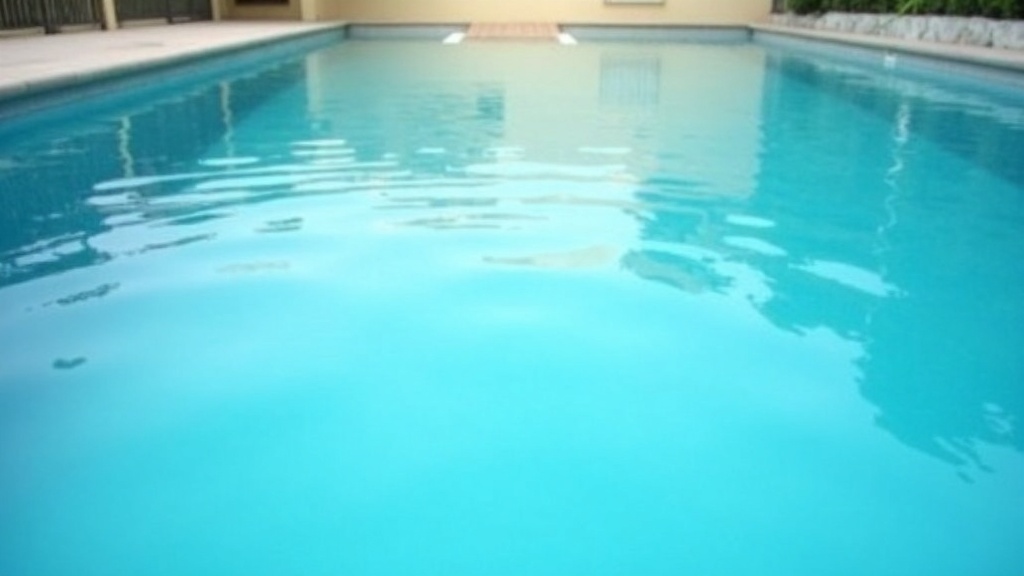Swimming isn’t just about splashing around in the pool. It’s one of the most complete workouts out there. From boosting heart health to sculpting every muscle group, this activity packs a ton of benefits, whether you’re an athlete or just someone looking to move more. If you’re searching for a way to improve your physical and mental well-being with little risk to your joints, swimming is a pretty solid option worth your attention.

The Basics: Why Swimming Is Amazing for Your Body
Swimming covers every aspect of fitness in a single session. The first thing you’ll notice in the water is how every stroke pulls you from head to toe. Whether you’re doing freestyle, backstroke, or even a relaxed breaststroke, you’re working muscles in your arms, shoulders, chest, core, hips, and legs all at the same time.
The cool part? Water itself gives you gentle resistance, so your muscles stay engaged the whole time. It’s like every movement has built-in weight, without any actual equipment. Because of this, you tone and strengthen your entire body in one workout, and you can always change how hard you work based on your own pace.
Where most workouts, like running or HIIT, can leave your joints feeling sore, swimming keeps things easy on your knees, hips, and spine. Since the water holds up your body, there’s almost zero impact. That makes it a super safe pick for anyone dealing with arthritis, injuries, or chronic pain. After years of knee issues, I found that I could swim longer and harder than I could run, and I didn’t have to worry about taking recovery days just to give my joints a break.
What Happens to Your Body When You Swim?
People often wonder exactly which muscles swimming shapes. In my experience, swimming uses plenty more muscle groups than anyone expects. Here’s a breakdown of what’s happening while you’re swimming laps:
- Arms and shoulders: Pulling through water with each stroke builds serious definition in your triceps, biceps, and deltoids.
- Back and chest: Every time you reach, rotate, or push off the wall, your lats, pectorals, and traps get engaged. Over time, this leads to a pretty strong upper body.
- Core muscles: Keeping your body flat and balanced means your abs and lower back stay tight with every lap.
- Legs: Kicking works your quads, hamstrings, calves, and even your glutes. From treading water to pushing off, your lower body gets a powerful workout.
Many swimmers notice they get toned and lean all over rather than just bulking up one area. That’s the full body magic of swimming, and it’s a big reason so many people stick with it.
Water Resistance: Nature’s Personal Trainer
One reason swimming shapes muscles so well is the water itself. When you move in water, it pushes back about 12 times tougher than air. Every pull, kick, and turn has natural resistance. No need for extra weights. This makes swimming a great option for anyone looking to tone up with less risk of injury.
Personally, I find swimming helps build muscle endurance. You feel the constant push with every lap, so your muscles learn to handle more work for longer, which really helps with everyday strength too. Mix up a few different strokes and you’ll definitely notice the burn! For those who crave variety, doing sets of freestyle then flipping to backstroke can keep things interesting and ensure you’re challenging all muscle groups. Water’s resistance ramps up as you move faster—giving you flexibility to set your own challenge level each session.
Heart Health and Endurance Goals
Swimming is more than building muscle. It’s actually pretty great for your cardiovascular health. Moving through water forces your heart to pump blood efficiently, and your lungs get a real workout with every breath you take. One thing that’s easy to overlook: mastering steady breathing and long exhalations can improve your stamina, even outside the pool.
Just 30 minutes in the pool a few times a week can help lower blood pressure, boost good cholesterol, and improve circulation. According to the CDC, swimming can reduce the risk of chronic illnesses like heart disease and type 2 diabetes. That’s a pretty good trade-off for something that feels less exhausting on your joints than a hard run.
If you train regularly, you’ll get a feel for how much your overall fitness improves. As your fitness ramps up, try extending your sets or just reducing your rest intervals between laps—you’ll soon see progress. Endurance built in the pool transfers well to other sports and helps with everything from hiking to chasing after the kids.
Joint Friendly Moves: Swimming for Arthritis and Injury Recovery
If you’ve ever had joint pain or struggled with stiffness, you’ll know how frustrating it can be to find a workout that doesn’t make things worse. Water workouts are gentle by nature, with buoyancy lifting most of your body weight, meaning you’re less likely to make your joints sore. A lot of physical therapists recommend swimming for people recovering from surgery, injuries, or who have arthritis. I’ve seen older friends and family members able to swim daily without aggravating their conditions. That’s pretty reassuring.
There are also loads of swim styles and pool routines you can try, so you’re not stuck doing one move repeatedly. Aqua jogging, simple lap swimming, or water aerobics are all options that help protect the joints and build strength at your own pace. If you need extra support, most pools offer floatation belts or noodles to help with stability and confidence, especially when just starting out.
Calorie Burn and Weight Management
Swimming can help you manage your weight or work toward fat loss if that’s on your mind. Water makes everything feel lighter, but don’t be fooled. It actually burns quite a few calories. On average, an hour of moderate swimming can use up between 400 to 600 calories depending on your body type, the stroke you use, and how hard you push. That’s on par with running, cycling, or brisk walking, but with far less impact on your body.
What I love is how sustained the calorie burn is. You have to use multiple muscle groups at once, so your body works harder even after you leave the pool. Plus, swimming doesn’t get boring quickly, and you can up the intensity or add intervals to mix things up. For added motivation, wear a waterproof fitness tracker to keep an eye on your progress and celebrate your milestones—whether it’s shaving off a few seconds per lap or hitting a new calorie count.
Stress Relief and Mental Health
Swimming gives your mind a break as much as your body. There’s something about the rhythm of your strokes, the calming sound of water, and the steady breathing that’s instantly soothing. Many people (myself included) find that stress melts away after a session in the pool.
Studies show that regular swimming can help ease up symptoms of anxiety and depression. Exercise in general helps release feel-good hormones like endorphins, but water adds an extra layer of calm. On tough days, I treat my swim as moving meditation. It resets my mood, boosts my focus, and I always leave feeling refreshed. If you want a mindful way to stay active, swimming’s got you covered. You might even stumble upon new friendships and a sense of community in your local pool, which can be a true mental boost all its own.
Getting Started: Simple Tips for New Swimmers

Jumping into swimming doesn’t mean you need Olympian skills from day one. Whether you’re looking for a gentle workout or serious muscle training, there are lots of ways to start. Here’s what helped me (and can probably help you, too):
- Start slow: Try swimming short intervals and rest when you need it. It’s about consistency, not speed.
- Switch up strokes: Experiment with freestyle, backstroke, and even dogpaddle if that’s your vibe. Each stroke works muscles in slightly different ways.
- Use pool gear: Fins, kickboards, or pull buoys add variety and challenge specific muscle groups.
- Ask for help: Many pools offer beginner classes or technique lessons; totally worth checking out for extra confidence and skill building.
- Make it social: Swimming with friends or joining a club helps with motivation and makes the process more fun.
If you’re looking for extra guidance, try watching online videos to pick up tips on good form. Even a small tweak in your arm placement or kick can give a boost to your swimming results and help prevent any aches and pains.
Challenges You Might Face (And How to Get Past Them)
Getting into swimming is an adventure, and sometimes you’ll face a few hiccups. Here are some common hurdles and practical tips on handling them:
- Breathing difficulty: Controlled breath takes practice, so try counting strokes or using fins to focus on breathing rhythm. It gets easier, trust me!
- Fatigue: Water workouts are sneaky. Pace yourself, take breaks, and remember hydration is just as important here as in the gym.
- Access to pools: Not everyone has a community pool close by, but even hotel or gym pools can be great for short routines. Open water swimming (with safety in mind) can be another option if you’re comfortable in those settings.
- Staying motivated: Set small goals, like doing extra laps, trying a new stroke, or working up to a longer session. Progress comes in all shapes and sizes.
Stay patient with yourself. Every session counts, even if you’re not the fastest in the pool. Really, the hardest part is just showing up. This is true for nearly any exercise routine. Remember, tracking your progress over time (distance swum, endurance, or how relaxed you feel afterward) can help keep you encouraged and reinforce your habit.
Frequently Asked Questions
People often have questions before trying out swimming as a fitness solution. Here are a few of the most common ones I’ve heard:
Question: How often should I swim to see results?
Answer: Two to three sessions a week is a really good starting point. More frequent sessions bring faster progress, but even one solid workout weekly makes a difference over time.
Question: What if I’m not a strong swimmer?
Answer: You don’t need to swim fast or even nonstop to get health benefits. Try easier strokes, use pool equipment, and gradually build your confidence.
Question: Are there risks with swimming?
Answer: Swimming is safe for most people, especially because of the low impact, but it’s important to listen to your body and take regular breaks. If you’re starting with health concerns, ask your doctor before jumping in.
Swimming gives you flexibility, strength, and stress relief, all without hammering your joints. Stick with it, mix up your strokes, and enjoy what happens as your body changes and your mind unwinds in the water. The pool isn’t just a workout spot; it can quickly become your go-to for total well-being.
